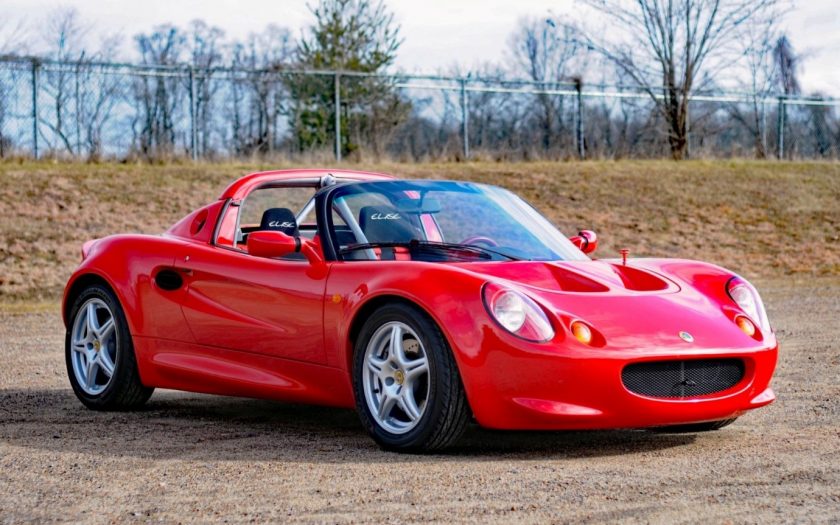Ever wondered what classic car to consider? Paul Murrell tests the 1996-2001 Lotus Elise S1 with pricing, specs, ride and handling, safety, verdict and everything the over-50 classic car buyer needs to know.
Summary: A true ground-breaking sports car that provides thrills and enjoyment well beyond its price. Avoid non-factory modifications unless they can be reversed.
1996-2001 Lotus Elise S1 sports car
Price range: $30,000-$60,000
Safety: No ABS or airbag
Engine: 1.8-litre DOHC fuel injected four-cylinder
Power: 88kW
Torque: 165Nm
Transmission: 5-speed manual, rear-wheel drive
Steering: rack and pinion
Body: 3726mm (long); 1820mm (wide); 1202mm (high)
Build country: Britain
Interior features: air conditioning only on cars later than 1988
Exterior features: alloy wheels, optional hardtop, spare wheel repair kit
Kerb weight: 725-755kg
Wheels: 15-inch alloy (front), 16-inch alloy (rear)
Tyres: 185/55R15 (front), 205/50R16 (rear)
Brakes: ventilated discs (front and rear)
Fuel tank: 40 litres
Consumption: 7.1L/100km
[review]

Lotus went back to its roots when it launched the Elise at the 1995 Frankfurt motor show. Here was a proper Lotus, the first that was broadly affordable since the Series 4 Lotus 7 was discontinued in 1973.
Autocar called it the “most technologically daring Lotus road car since the original Elite” and that makes it very desirable indeed.
The list of innovations was long, and very ambitious for a small company like Lotus: epoxy-bonded anodised aluminium, a simple high-sided tub with transverse torque boxes at both ends and exceptionally light at less than 750kg. The only steel in the car was in the roll bar, galvanised rear sub frame and bonded-in suspension mounts.
Combining as it did, stunning response, feel and cornering ability with a very acceptable degree of ride comfort, it also proved remarkably successful.
Powering the car was the Rover K-series engine and gearbox, unchanged from the MGF but somehow feeling keener and more alive. The engine featured double overhead cams, 16 valves and all-aluminium construction, making it very light and capable of substantial performance upgrades.
Rarer models but not sold in Australia include the 1999 Sport with 91kW and the 101kW Sport R.

What to look out for
Even though Lotus owners tend to take great care of their cars, the Elise can have had a tough life, especially if it’s been thrashed on the track (as many have).
The glassfibre bodywork can trap moisture causing the paint to lift.
The steel bobbins for the front top suspension mounts can rust, causing electrolytic corrosion in the aluminium chassis.
In a severe impact, the rear subframe can be bent or even cracked. Being galvanised, it resists rust unless it’s been abused. The chassis itself should be checked for any welding or patching, or other signs of less than thorough repairs.
Electric windows (it is English, after all!) can be faulty and surprisingly expensive to put right.

Carry out the usual checks of the engine, keeping an eye out for water in the oil (or vice versa) – the Elise is very prone to head gasket problems and overheating – and ensure that the cambelt has been changed regularly (at least every five years). Rattling on cold start-ups indicates poorly adjusted hydraulic tappets and is a sign of neglected servicing.
The sot top is difficult and fiddly to fit, and never fully waterproof. Insist on seeing it fitted and check for tears around the attachment points. And check the age of the tyres – Elises tend not to do high mileages and tyres can get hard with age, even if there appears to be plenty of tread.
Radiators are prone to damage, corrosion and blocked ducts. An updated aluminium replacement is a bonus.

The gearchange is by cable and even when new was considered rubbery. Crunchy gearchanges may indicate a rebuild is imminent. Check that it doesn’t jump out of fifth gear.
Warm the engine and then turn on the lights. If the temperature gauge flickers, poor earthing is the likely cause and it can be difficult to trace where the problem is. Also inspect the headlight reflectors – corrosion is common and replacements expensive.
If the car doesn’t feel taut and tight, it may need work.
